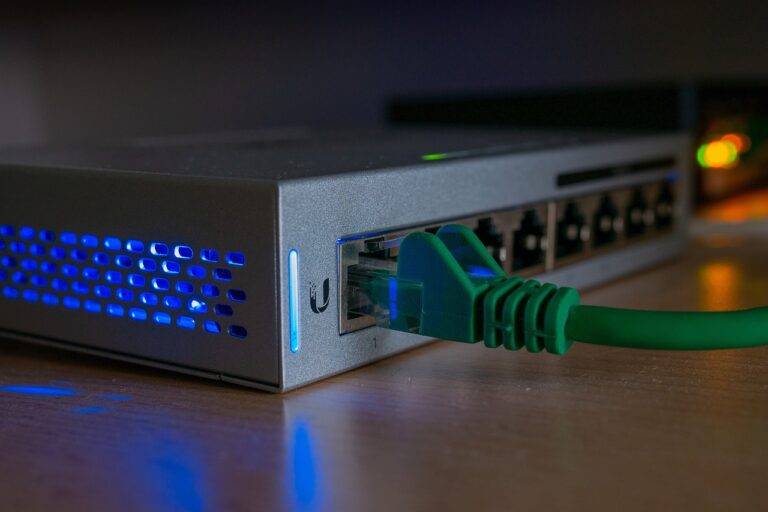Exploring the Latest Advancements in Data Storage
With the exponential growth of data in today’s digital age, the need for innovative solutions in data storage has become more crucial than ever. From traditional hard drives to cloud storage and solid-state drives (SSDs), the world of data storage is constantly evolving to keep up with the demands of modern technology. In this article, we will delve into the latest advancements in data storage technologies and how they are shaping the future of data management.
1. The Rise of Solid-State Drives (SSDs)
One of the most significant advancements in data storage technology in recent years has been the widespread adoption of solid-state drives (SSDs). Unlike traditional hard disk drives (HDDs) that rely on spinning disks to store data, SSDs use flash memory to store data electronically. This results in significantly faster read and write speeds, improved durability, and lower power consumption compared to HDDs.
SSDs have become increasingly popular in both consumer and enterprise markets due to their performance benefits. With the prices of SSDs steadily decreasing and their capacities increasing, they are now more accessible than ever. Many new laptops and desktop computers come equipped with SSDs as their primary storage devices, and data centers are also migrating to SSDs for their speed and reliability.
2. Cloud Storage Solutions
Cloud storage has revolutionized the way we store and access data, offering a convenient and scalable solution for businesses and individuals alike. With cloud storage, data is stored on remote servers maintained by third-party providers, allowing users to access their data from anywhere with an internet connection.
Cloud storage offers several advantages, including flexibility, accessibility, and scalability. Businesses can easily scale their storage needs according to their requirements, paying only for the storage they use. Additionally, cloud storage providers often offer advanced security features to protect data from unauthorized access and ensure data integrity.
3. Hybrid Storage Solutions
Hybrid storage solutions combine the benefits of traditional HDDs and SSDs to offer a balanced approach to data storage. By utilizing both types of storage media, hybrid storage solutions aim to provide the performance benefits of SSDs while maintaining the cost-effectiveness and capacity of HDDs.
One common implementation of hybrid storage is the use of SSDs as a cache for frequently accessed data, while less frequently accessed data is stored on HDDs. This tiered storage approach optimizes performance and cost-effectiveness, making hybrid storage solutions a popular choice for organizations with varying storage needs.
4. Object Storage
Object storage is a scalable and cost-effective storage solution that is ideal for storing large amounts of unstructured data, such as multimedia files, documents, and backups. Unlike traditional file storage systems that organize data in a hierarchical structure, object storage stores data as objects with unique identifiers.
Object storage is highly scalable, allowing organizations to store petabytes of data efficiently. It also offers high levels of resiliency and fault tolerance, making it ideal for data archiving and disaster recovery purposes. Object storage is commonly used in cloud storage environments and distributed systems that require massive scalability.
5. Tape Storage Solutions
Although tape storage may seem like an outdated technology, it remains a viable option for long-term data archiving and backup. Tape storage offers high capacity and low cost per gigabyte, making it an attractive option for organizations that need to store vast amounts of data for extended periods.
Tape storage solutions also offer offline data protection, making them resilient to cyberattacks and ransomware. Many industries, such as healthcare and finance, rely on tape storage for compliance and regulatory requirements. With advancements in tape technologies, such as Linear Tape-Open (LTO) and the introduction of tape libraries, tape storage continues to evolve to meet the changing needs of data storage.
6. FAQs
1. What are the benefits of using solid-state drives (SSDs) over traditional hard disk drives (HDDs)?
SSDs offer faster read and write speeds, improved durability, and lower power consumption compared to HDDs. They are ideal for applications that require high performance and reliability.
2. How does cloud storage work, and what are the advantages of using it?
Cloud storage involves storing data on remote servers maintained by third-party providers. The advantages of using cloud storage include flexibility, accessibility, scalability, and advanced security features.
3. What is hybrid storage, and how does it combine HDDs and SSDs?
Hybrid storage solutions combine the benefits of HDDs and SSDs by utilizing SSDs as a cache for frequently accessed data, while less frequently accessed data is stored on HDDs. This tiered storage approach optimizes performance and cost-effectiveness.
4. What is object storage, and where is it commonly used?
Object storage is a scalable and cost-effective storage solution that is ideal for storing large amounts of unstructured data. It is commonly used in cloud storage environments and distributed systems that require massive scalability.
5. Why is tape storage still relevant in the age of modern data storage technologies?
Tape storage offers high capacity, low cost per gigabyte, and offline data protection, making it an attractive option for long-term data archiving and backup. Many industries rely on tape storage for compliance and regulatory requirements.
As data continues to grow at an unprecedented rate, the evolution of data storage technologies plays a crucial role in enabling organizations to efficiently manage and access their data. By exploring the latest advancements in data storage, businesses can stay ahead of the curve and leverage these technologies to drive innovation and growth.





